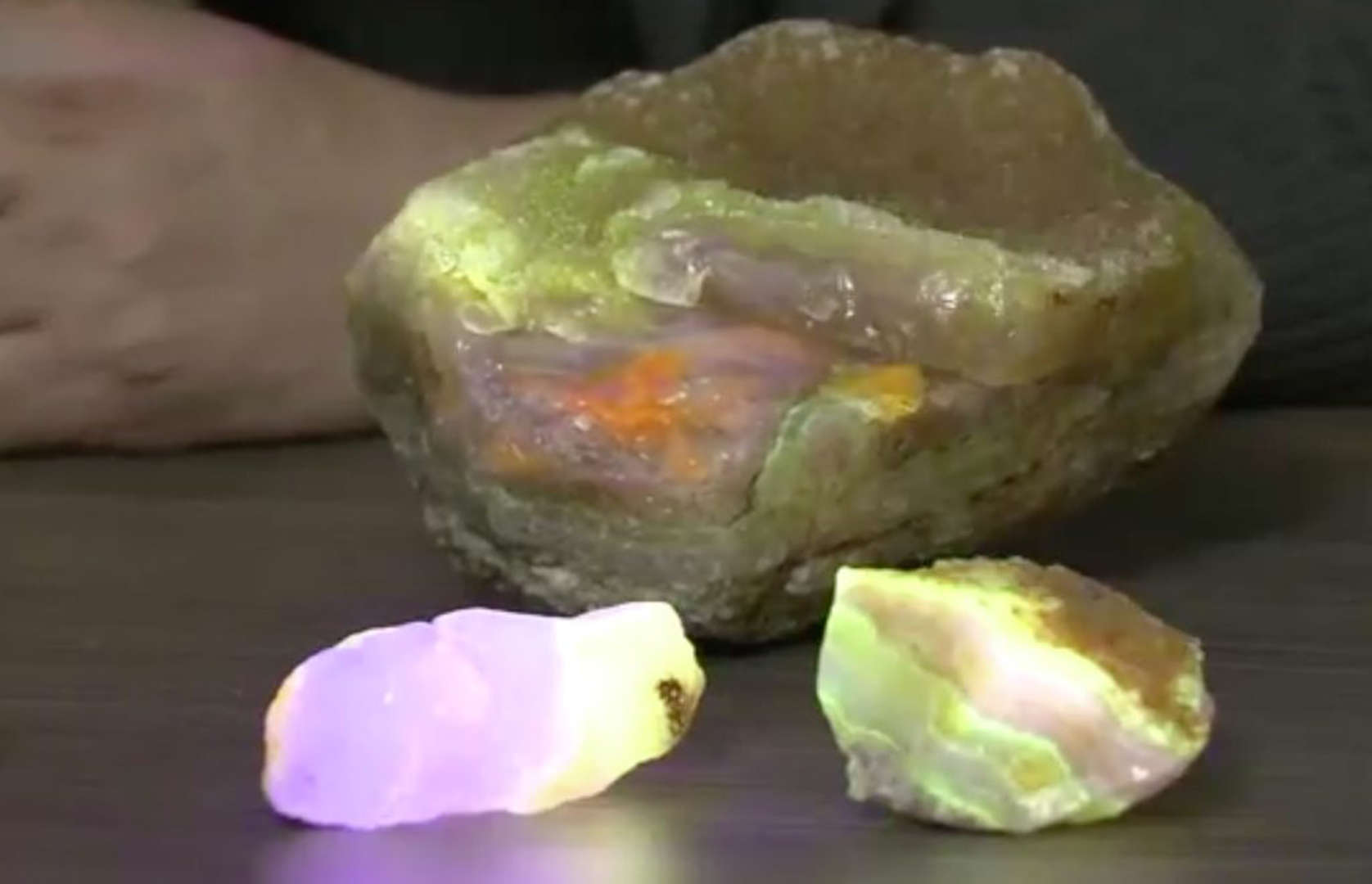Hokkaidoite a Newly Discovered Mineral, Exhibits Ultraviolet Illumination
Hokkaidoite was discovered in Hokkaido in Japan
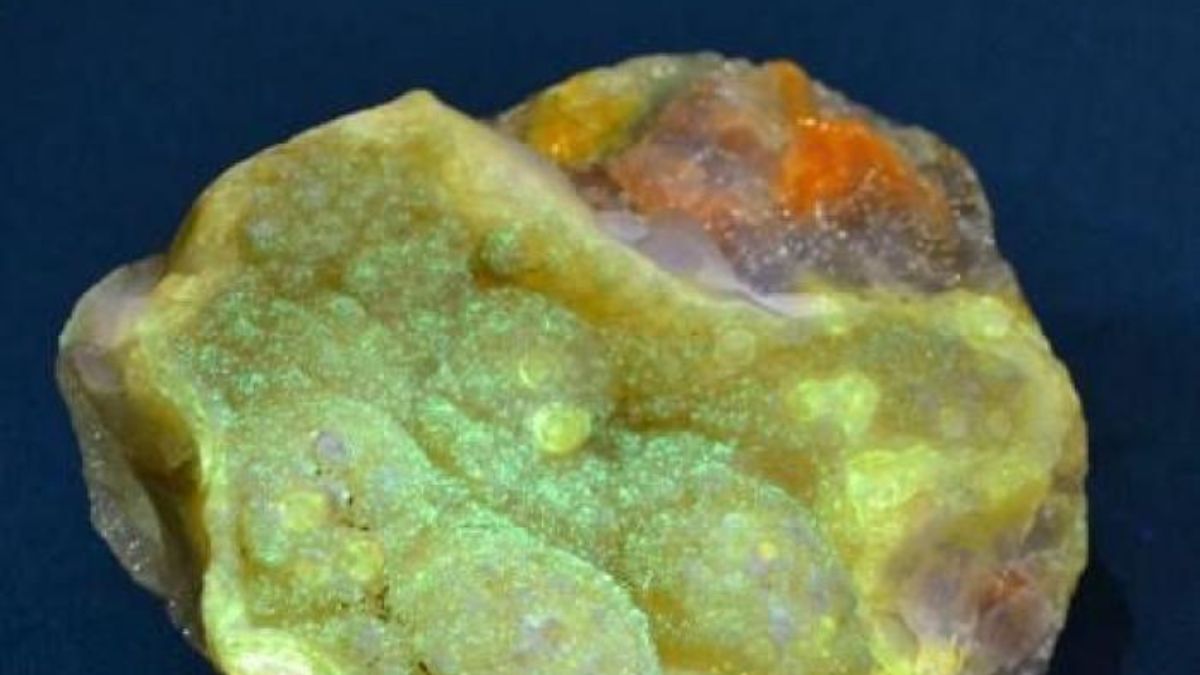
Scientists have unearthed a new variety of mineral in the northernmost Japanese prefecture of Hokkaido. Named Hokkaidoite, this remarkable mineral emits a captivating bright light when exposed to ultraviolet rays. The breakthrough finding was made by a group of researchers hailing from the Sagami Chemical Research Institute near Tokyo and Osaka University.
Illuminating the Depths: The Discovery of Hokkaidoite
Unveiling a Radiant Wonder
Upon closer examination, the researchers found that Hokkaidoite is an organic mineral composed of elements commonly found in living organisms, such as carbon and hydrogen. While the mineral appears light yellow under natural light, it exhibits a striking transformation when subjected to ultraviolet rays, emitting a vibrant yellow or yellow-green glow.
Serendipitous Finds
The team’s investigation led them to two distinct samples of Hokkaidoite. The first specimen was found within opal obtained from a forest in Shikaoi Town, while the second was discovered in a rock by an enthusiastic amateur mineralogist in Aibetsu Town.
Decoding the Enigma: Hokkaidoite’s Composition
Further analysis and meticulous scrutiny of the mineral’s characteristics revealed its unique makeup. Hokkaidoite is predominantly comprised of a material called “benzopyrene,” which exists in minuscule amounts in petroleum. The International Mineralogical Association officially registered this extraordinary find in January, designating it as “Hokkaidoite.”source
A new variety of mineral, which shines brightly under ultraviolet rays, has been discovered in the northernmost Japanese prefecture of Hokkaido.
A group of researchers, including those from the Sagami Chemical Research Institute, near Tokyo, and Osaka University, made the discovery. The new find is a kind of organic mineral consisting of elements such as carbon and hydrogen that are found in living organisms. The mineral is light yellow under natural light, but it emits bright yellow or yellow-green light under ultraviolet rays. The researchers say one piece of the mineral was contained in opal they obtained in a forest in Shikaoi Town and another was in a rock found in Aibetsu Town by an amateur mineralogist. The group’s detailed analysis revealed that the mineral is a new type made up of material called “benzopyrene.” Very small amounts of it exist in petroleum.
The International Mineralogical Association registered the mineral in January under the scientific name “hokkaidoite.”
Hokkaidoite is supposed to have been generated after remnants of living organisms under the ground were heated by volcanoes. The group says the new find could shed light on the mechanism of oil generation. The institute’s chief researcher, Tanaka Ryoji, says he wants people to know there are many more interesting minerals in Japan’s mountains. The mineral is to be put on display at the visitor center of Tokachi Shikaoi Geopark from Monday. source
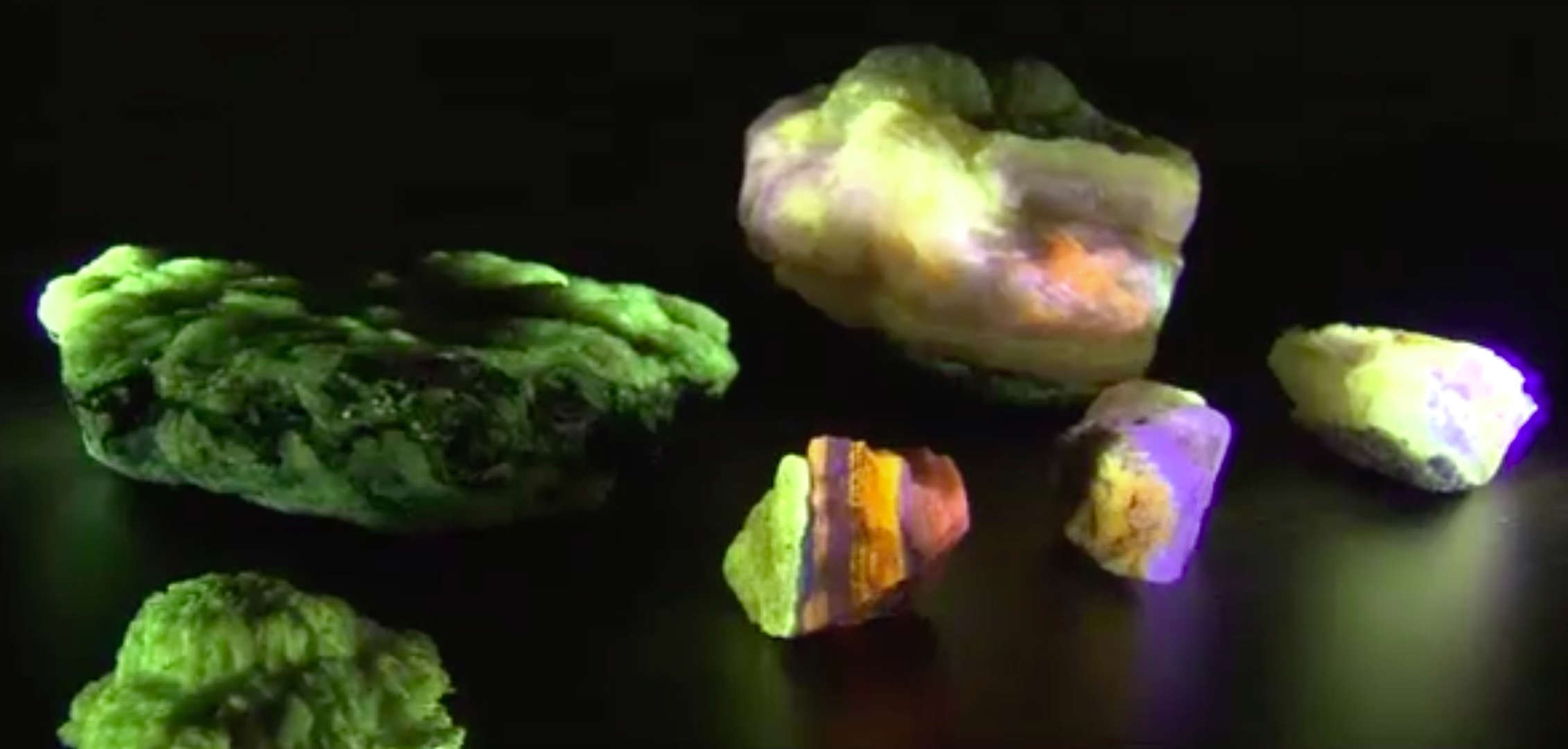
Newly Discovered Mineral Exhibits Ultraviolet Illumination
Scientists have identified a newly discovered mineral that exhibits illumination under ultraviolet rays. Known as Hokkaidoite, this mineral is believed to have formed from the remains of living organisms, which were subjected to volcanic heat deep underground. Researchers are hopeful that this discovery, made in Hokkaido, Japan, will contribute to a better understanding of oil generation processes.
Hokkaidoite contains hydrogen and carbon, elements commonly found in living organisms. When observed under natural light, the mineral appears light yellow in color. However, when exposed to ultraviolet rays, it emits a fluorescent yellow-green glow. The discovery was made by scientists from Osaka University and the Sagami Central Chemical Research Institute, with one sample found in opal from a forest near Shikaoi and another discovered by an amateur mineralogist in a rock from Aibetsu. source
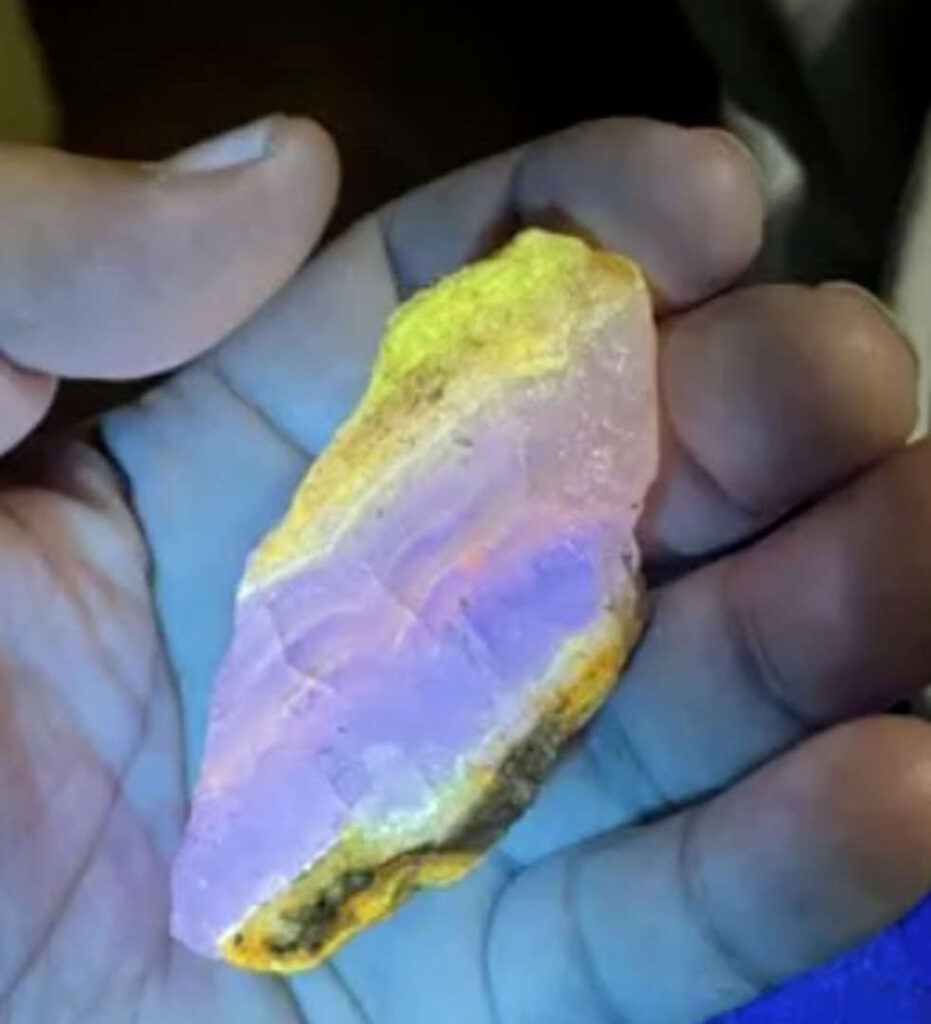
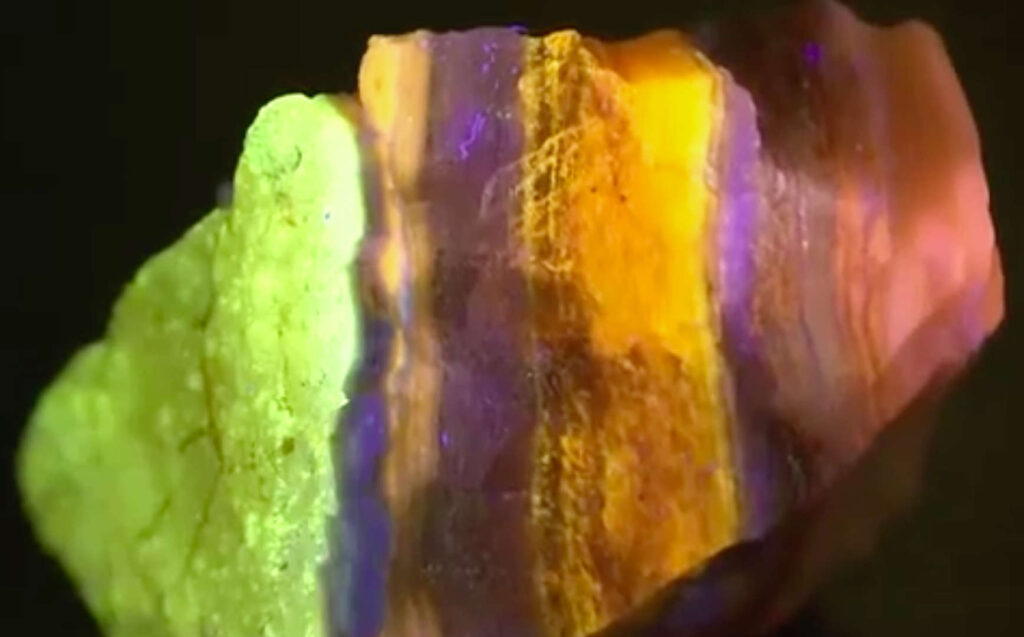
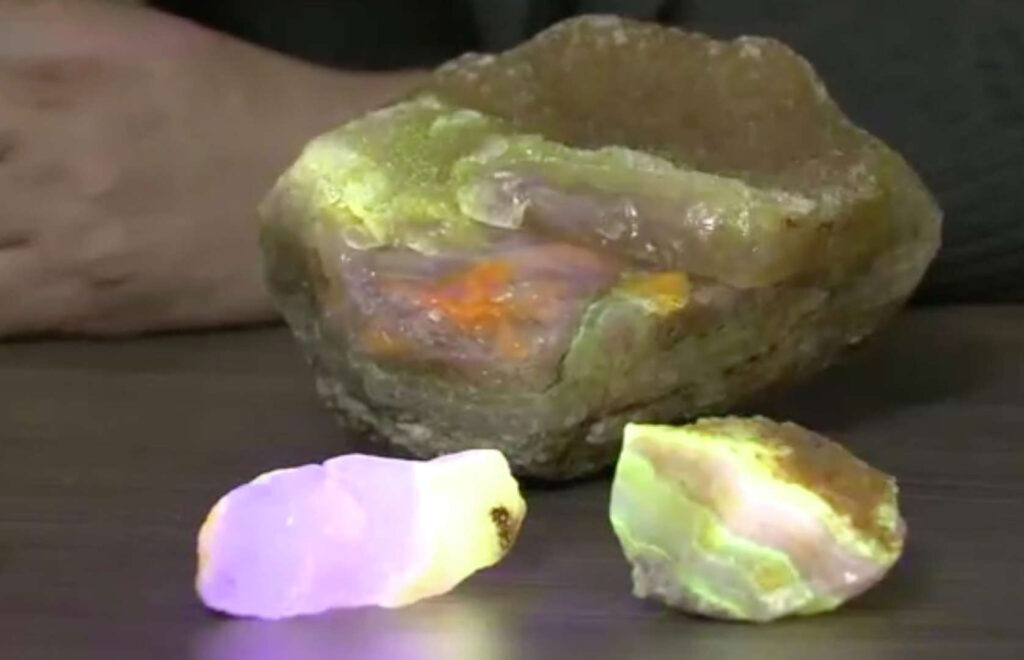
Hokkaidoite
Co-Type Localities: ⓘ Aibetsu mercury mine, Asahiyama quarter, Aibetsu-chō, Kamikawa Subprefecture, Hokkaidō Prefecture, Japan
Mineral SymbolsHide
As of 2021 there are now IMA–CNMNC approved mineral symbols (abbreviations) for each mineral species, useful for tables and diagrams.
| Symbol | Source | Reference |
|---|---|---|
| Hkd | IMA–CNMNC | Warr, L.N. (2021). IMA–CNMNC approved mineral symbols. Mineralogical Magazine, 85(3), 291-320. doi:10.1180/mgm.2021.43 |
Note: type locality is reported as “Shikaribetsu area” (set to: Shikaribetsu lake fluorescent opal occurrence). Aibetsu mercury mine is the cotype locality. source

